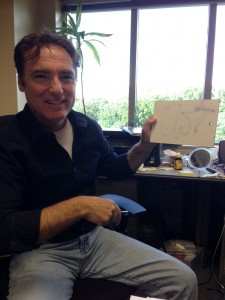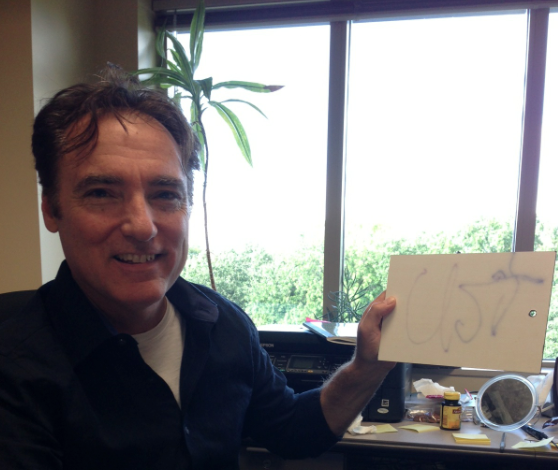From color-changing beer cans to transitioning lenses, using chemistry to develop products keeps professor J. Thomas Ippoliti busy when he isn’t teaching.
Ippoliti leads a hand-picked team of research students who spend summers working on privately funded projects focused on light-changing agents. Some of the technology his team has developed is used in well-known products, such as transition lenses and the Coors activation beer can designed to show consumers when their beverage is cooled.
After spending some of his post doctorate career creating compounds for Exxon, Ippoliti joined the St. Thomas chemistry department in 1989.
In 1992, Vision-Ease, a polycarbonate lens company for manufacturing glasses, approached Ippoliti and his growing team of research students to create a dye for transitioning lenses without breaking existing patents.
“Vision Ease wanted to create a dye to replicate transition lenses without having to buy the entire lens from the manufacturer, and that’s where we came in,” Ippoliti said.

After reading the patent literature, Ippoliti and his team developed the dye for the lenses in the summer of 1992. Since then, Ippoliti’s team has tried to outdo its previous innovations.
“Over the next decade, my team of undergraduate students and I made hundreds of different colored vision lenses and even a prototype cover to iMac computers,” Ippoliti said.
Although some may wonder why St. Thomas would allow students to conduct research for large companies in its space, Ippoliti said the answer is simple: It brings in money.
“It funds a lot students’ research that we just can’t get from government grants,” Ippoliti said. “We pay about 12 students each $4,000 a summer and to be able to do that, we have to bring in some big name companies to research for.”
Sophomore Courtney Pahl, one of Ippoliti’s summer research assistants said students gain insightful, real-world experience they wouldn’t otherwise have learned.
“I was honored to be apart of Dr. Ippoliti’s research team this summer. He is very knowledgeable in chemistry, and I learned a lot from him that I don’t think I would learn in any classroom,” Pahl said.
While working with Ippoliti, Pahl said her research experience has helped her understand classroom material better.
“It is one thing to know and understand the material from lecture or even the class’s lab, but it’s another thing to apply it in a real world scenario,” Pahl said.
Between 2002 and 2007, Ippoliti’s team worked on other projects, investigating antibiotic, antiviral and anticancer technology. The team’s work on security tagging (a method of identifying products) landed him a presentation at the CIA headquarters in Langley, Va.
Shortly thereafter, Ippoliti and his team started to work with Chromatic Technologies, a company that asked them to create a molecule that would visually show temperature changes.
“We were approached to create a thermochromic color molecule for tires that would glow bright red when the tire is about to delaminate,” Ippoliti said. “This allowed truck drivers to see when their tires were overheating so they can replace it before the tire delaminated.”
This concept was later applied to beverage cans, showing when the can is at an appropriate temperature for optimal enjoyment.
Sophomore science major Joelle Sakkal has Ippoliti for a lab professor and wasn’t aware of the research happening in that very same building.
“I had no idea that Dr. Ippoliti did such impactful work, no idea at all,” Sakkal said.
Ippoliti and his team continue to work on color changing agents in-house and hope that St. Thomas may fund patents in the near future so the university can legally own some of the innovations.
As for now, Ippoliti’s team will work on other projects that he called top-secret at this point. Ippoliti said he worked with color-changing molecules in diapers over the summer and will to continue to push boundaries in the future.
Luke Moe can be reached at moe95234@stthomas.edu.



